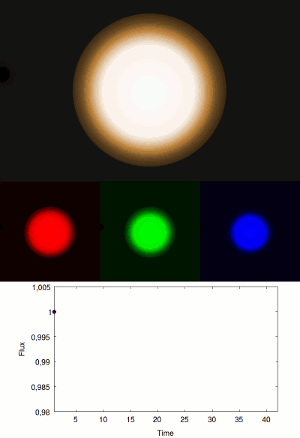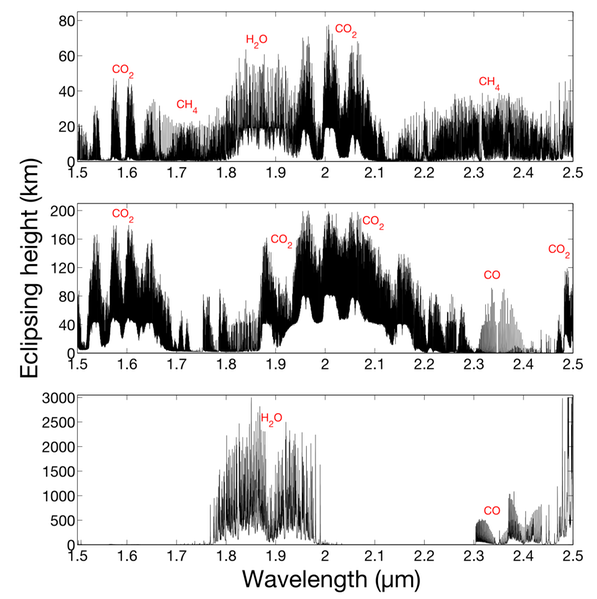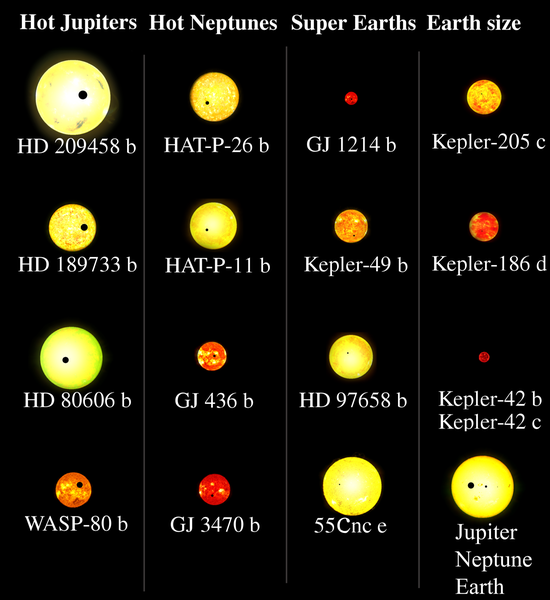Exoplanet atmospheres
The chemical composition of exoplanetary atmospheres can tell us much about the physical (and potentially life bearing) conditions on these worlds. The most successful method for measuring chemical composition of an exoplanetary atmosphere is the transit spectroscopy method. When an exoplanet passes in front of its host star from our point of view, a small fraction of the stellar light passes through the exoplanetary atmosphere, where molecules absorb light of some wavelengths while light of other wavelengths can pass through unhindered. By measuring the fraction of stellar light able to penetrate the atmosphere at different wavelengths, the chemical composition of the atmosphere can be inferred.
However, the fraction of stellar light that passes through a transiting exoplanet's atmosphere is very small, which constrains both the telescopes/instruments that can be used and the planetary system that can be observed. The on-going search for exoplanets helps us to find the best-suited systems for transit spectroscopy.

As the planet moves in front of the star, its brightness decreases. This planet has an atmosphere that absorbs blue and green light efficiently while letting red light pass through. By measuring the brightness decrease at different wavelengths, the wavelength dependent transmittance of the atmosphere can be obtained. Image credit: Erik Aronson

Modeled transmittance of three types of exoplanets in the near-infrared spectral region. Atmospheric transmittance is characterized by the amount of blocked stellar light, here characterized by additional perceived planetary radius (eclipsing height) due to absorption in the atmosphere. Top panel: Earth-twin. Middle panel: Hot Venus-like super Earth. Bottom panel: Hot Jupiter. Image credit: Erik Aronson

Visual representation of a few of the currently known most promising exoplanet systems for transit spectroscopy, with Jupiter, Neptune and Earth included for comparison. Image credit: Erik Aronson
Contact: Nikolai Piskunov, Ulrike Heiter, Ansgar Wehrhahn, Jennifer Greco, Adam Rains
